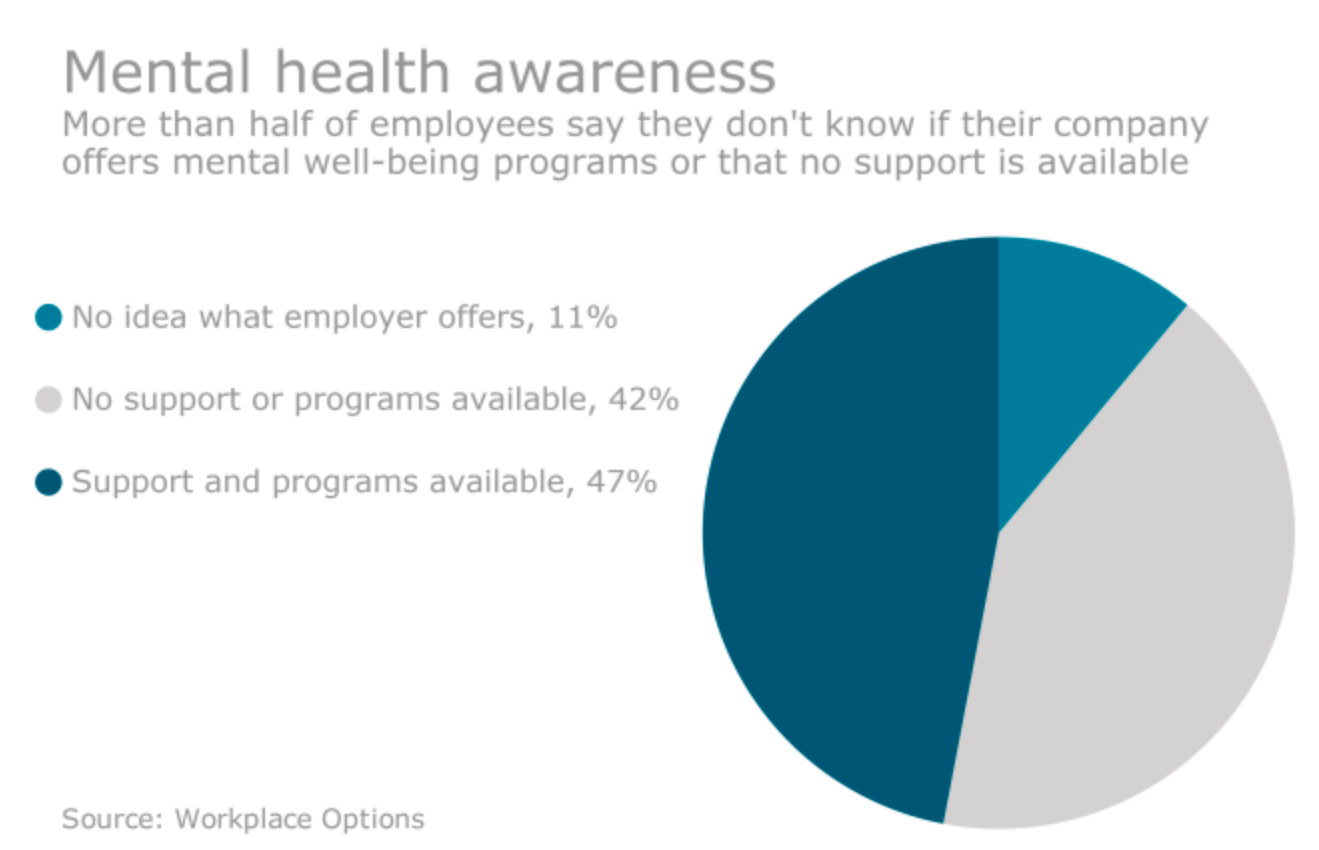This article was published on June 25, 2018 on Employee Benefit Adviser written by Harrison Newman. Photo Source: Employee Benefit Adviser.
Technology has transformed the way many of us work, but it also has almost completely eliminated our ability to unplug, de-stress and take care of our mental health. Many employees make themselves available 24/7, checking email before they go to sleep and as soon as they wake up. This “always on” mentality is costing everyone — businesses spend $300 billion each year on absenteeism, diminished productivity, employee turnover and insurance fees due to workplace stress.
Stress and mental health are increasingly important issues in the office. Elevated stress levels lead to mistakes, lower productivity, lower employee morale, higher rates of absenteeism and even physical illnesses such as high blood pressure and heart disease.
Up to 14% of mental health issues could be completely avoided by reducing workplace stress, according to the National Institutes of Mental Health. Now, more than ever, employers need to make sure their employees have the right resources to help combat depression, anxiety, stress and job strain.
Here are five ways employers can improve employees’ mental health.
Remove the stigma. Improving the mental health of your employees starts with talking openly about it. Employers should focus on mental health as part of a wider well-being program — calling attention to the need to relieve stress and seek help for mental health problems.
Workplace training to help employees and managers recognize the signs of stress and poor mental health can also bring attention to the issue.
Provide and promote stress-relief activities. Employers can build in activities to help relieve stress during the work day. Yoga, exercise classes and walking groups can help employees cash in on the feel-good endorphins that come from physical activity.
Some larger companies take stress relief to the next level. Office gyms, weight rooms and boxing gyms provide stress relief outlets. Some companies even employ in-house psychologists and other professionals to help teach employees how to manage their stress and fears.
Consider a flexible work policy. On a more basic level, creating a more flexible work policy throughout the day can also help. Everyone needs to take care of personal business from time to time, whether it’s a doctor’s appointment or a home maintenance issue. Take advantage of technology and allowing your employees to work from home or change their hours can help reduce stress.
Develop a financial wellness program. Financial fears are stressing out your employees. More than half of workers say they are stressed about money, and the younger the worker, the more likely he or she is to be worried. Creating a financial wellness program that educates employees on how to better manage their money can help remove this stress. A program could include helping younger generations balance paying back student debt with budgeting and saving, while older generations may focus on putting their kids through college while saving for retirement. Other topics to cover include making big purchases, such as a home or a car.
Highlight your employee assistance program. Draw attention to benefits that can help people cope with mental health issues. You very likely already offer an EAP, but you may not stress enough how it can help employees who may need assistance. Generally, an EAP includes telephone-based or in-person counseling, referrals and other resources to help assess and treat mental health issues. Communicate the details of your company’s EAP often (not just during open enrollment) to give employers another way to improve their well-being.
Your employees are your greatest asset; ensuring they are healthy is in your best interest. Facing mental well-being head-on can help you keep your employees happy and healthy, and help you boost your business.








